STRUMMING CHORDS
Once you’ve learned some basic chords, it’s time to begin working on some simple strumming techniques. The most basic way to strum chords is with your thumb, as shown.
THUMB BRUSH STRUM
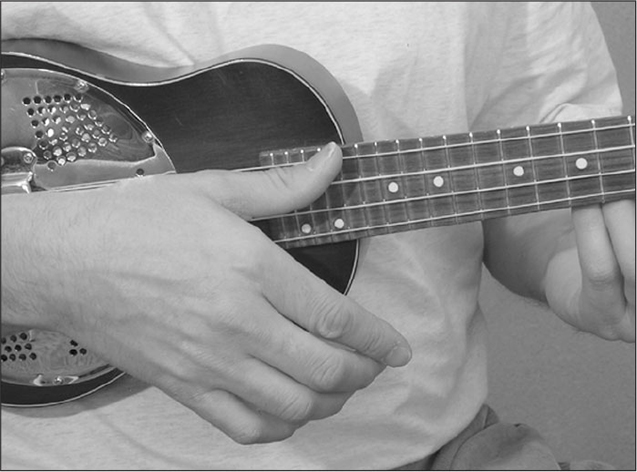
With your hand relaxed, let your thumb gently brush across the strings in a downward pattern.

Each time you brush down across all four strings, lift your hand back up without touching the strings and bring your hand back down to brush again. Do this until you can get a smooth rhythmic beat.
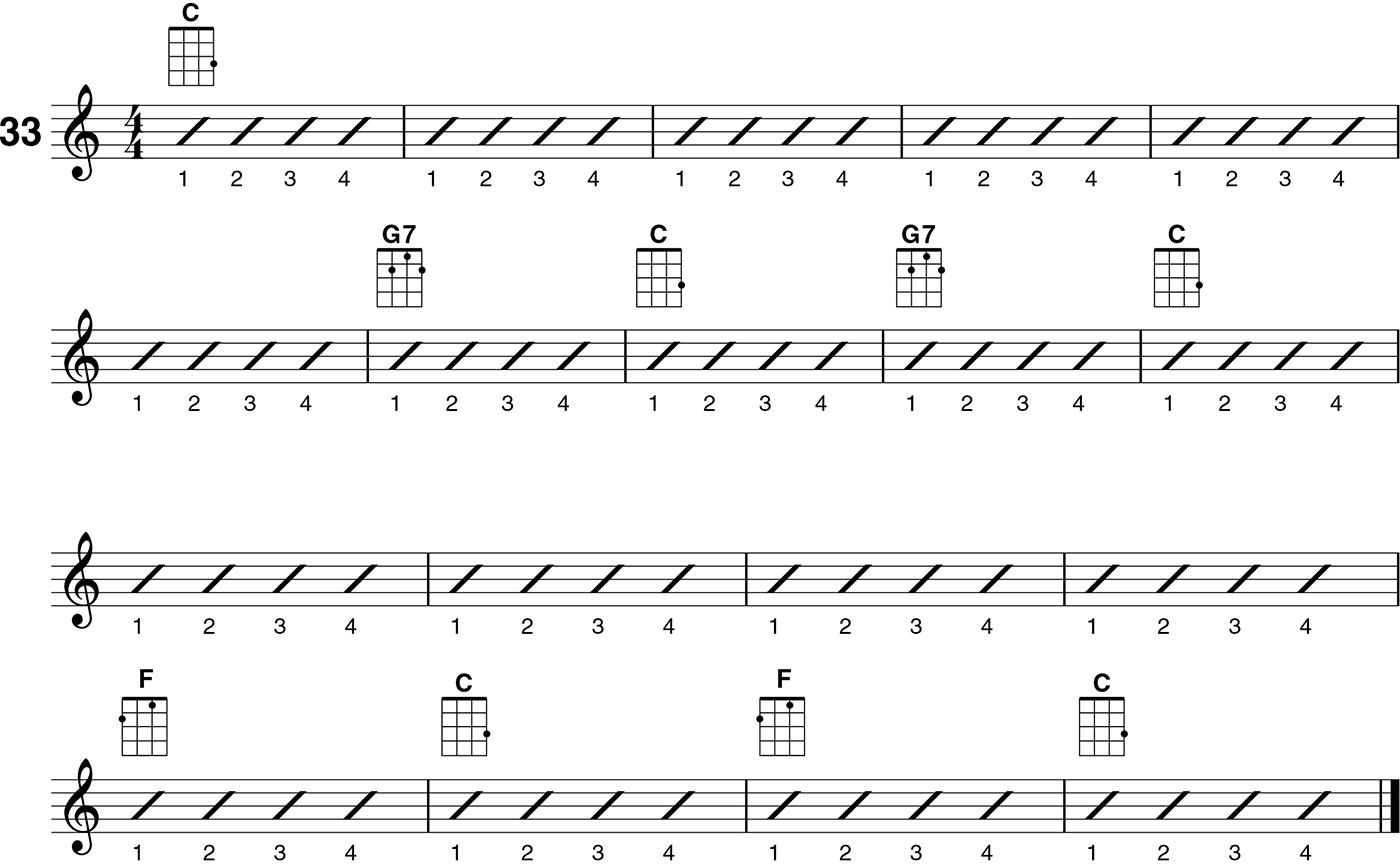
Using this familiar two-chord melody, practice the thumb brush strum while singing the words to “Hush Little Baby.”

FIRST-FINGER STRUM
The thumb brush may be the most basic way to strum, but the first-finger strum is the most common way to strum your ukulele. Make a loose fist with your right hand and let your first (pointer) finger curl out as shown. Place your hand over the lower fretboard and using the tip of your finger, strum down.
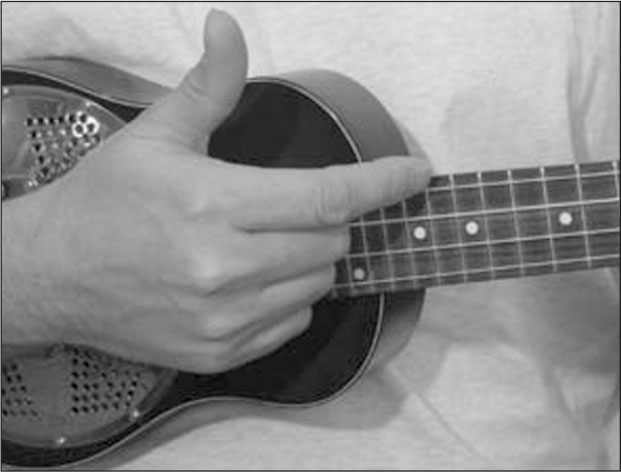 | 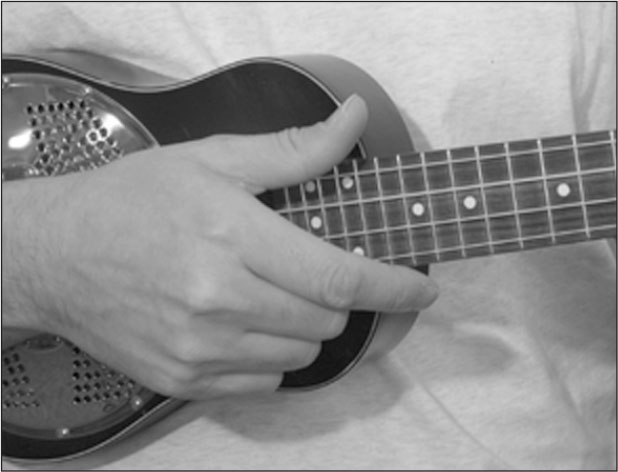 |
As you did with the thumb, brush down across all four strings, lift your hand back up without touching the strings, then brush down again.

12-BAR BLUES
The basic blues progression below is called a 12-bar blues, because it has twelve measures. From rock to country to pop, the 12-bar blues is the foundation upon which much of American music rests. It is the heartbeat of Chuck Berry, Bill Haley, Jerry Lee Lewis, and hundreds of others.
Practice this chord progression strumming slowly with this rhythmic strum pattern: down, down–up, down–up, down–up.

GENERIC BLUES
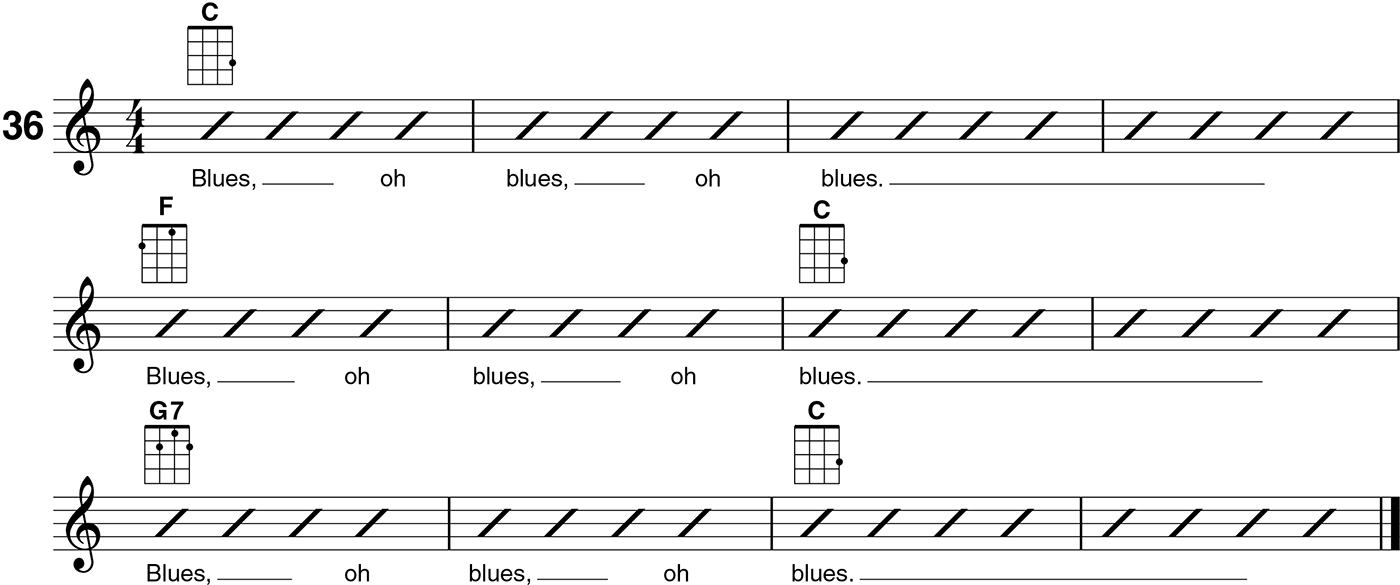
FINGER AND THUMB STRUM
Now that you are comfortable strumming with your thumb and your first finger, let’s combine them to create an interesting rhythm. The time signature is 4/4, four beats per measure. The count is “1–2–3–and–4.”
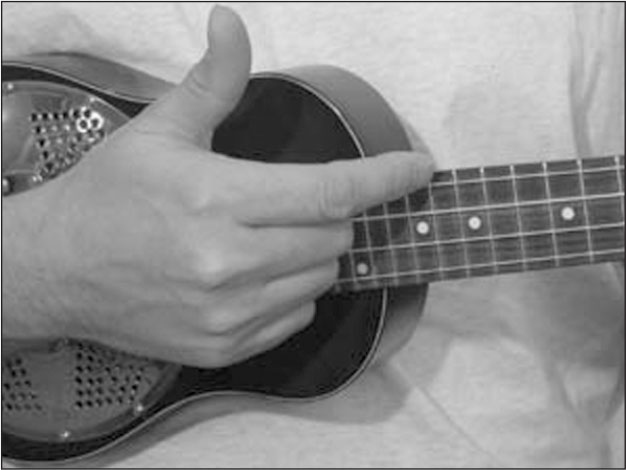 | 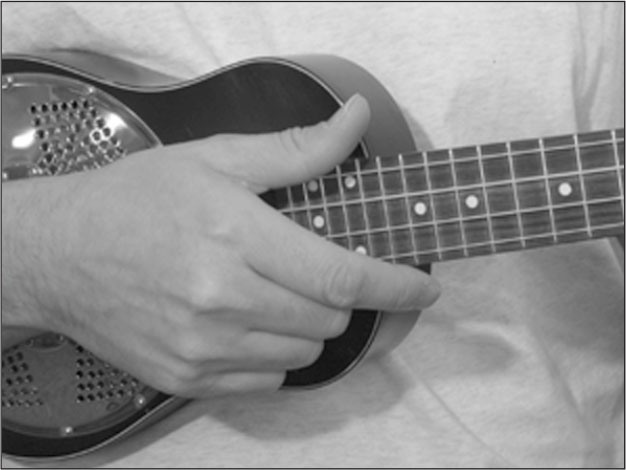 | 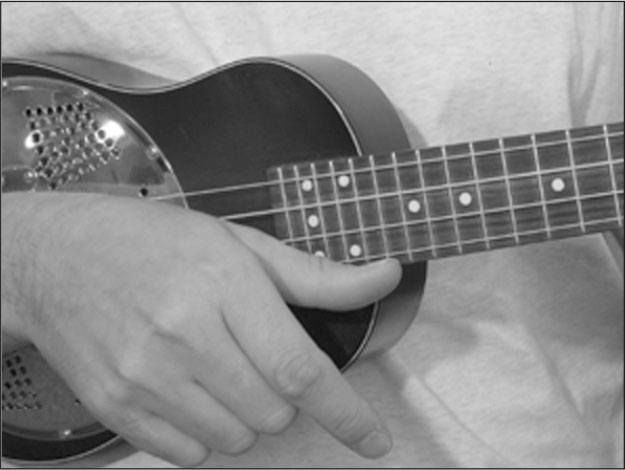 |
| 1. Brush down with your finger on beat 1. | 2. Brush down with your finger again on beat 2. | 3. Brush down again with your finger following quickly with your thumb, on beat 3. |
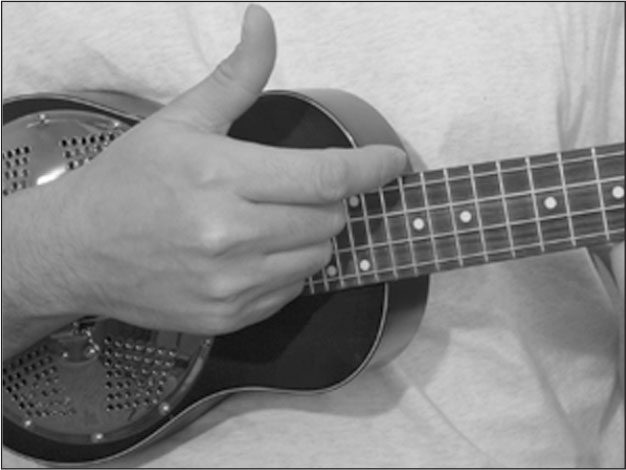 | 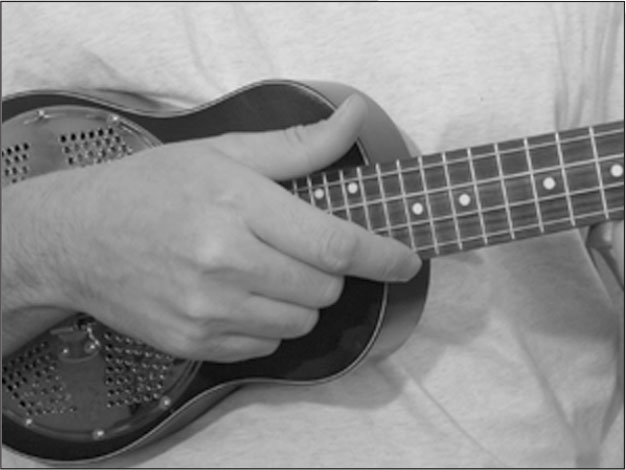 |
| 4. Following quickly, brush up with your finger on the “and” of beat 3 (the eighth note after beat 3). | 5. Brush down with your finger again on beat 4. |
Listen to the next audio track to get a feel for this new strum pattern. There are many variations that you can play. On the next page is a graphic example of the main strum pattern and a slight variation of it, both of which you’ll hear on the audio. The arrows represent downstrokes and upstrokes; F = finger, T = thumb.

Practice this very slowly until you can keep a steady rhythmic beat of “1–2–a–3–and–4.” It helps to count out loud.
STRUM IT
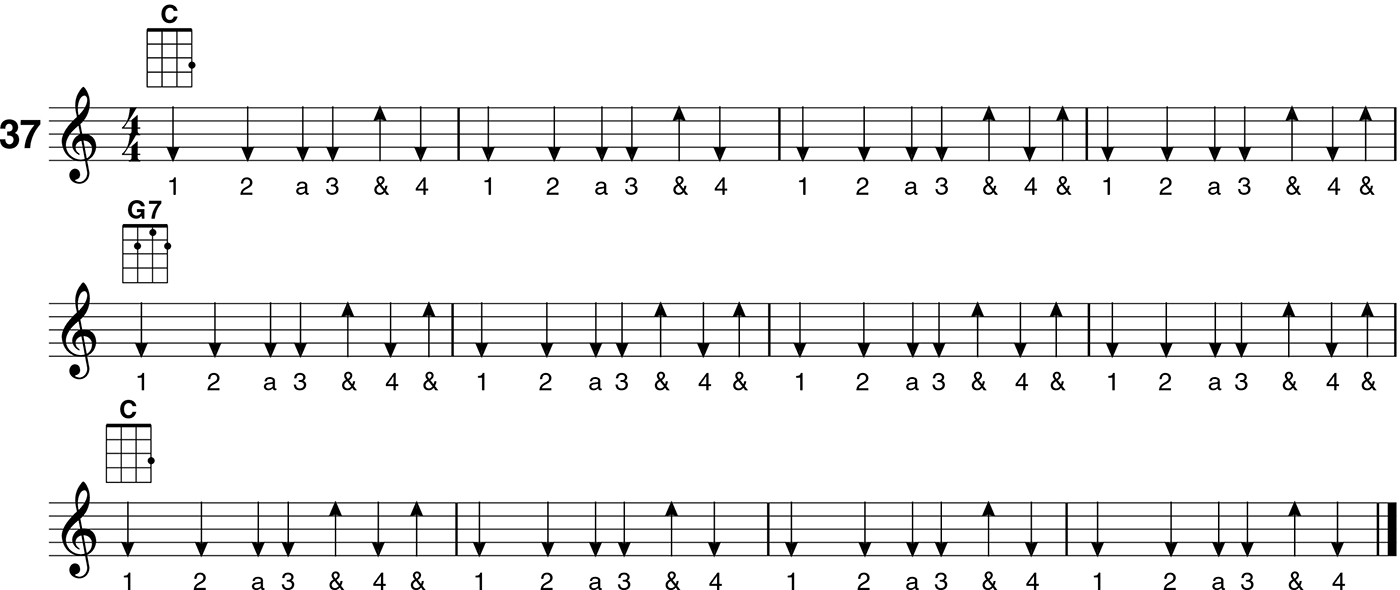
THE G CHORD FAMILY
G, C, D7, and Em Chords

Repeat this progression until you can change chords smoothly. Try playing it with the finger strum pattern heard on the audio.

Now try the “Ooh-Wah Uke” progression in the key of G. Use the finger and thumb strum and variation that you just learned.
OOH-WAH UKE

First, become comfortable with picking out the following melody. Then go back and learn the rhythm part by strumming the chords.
BOIL ‘EM CABBAGE DOWN
Bluegrass
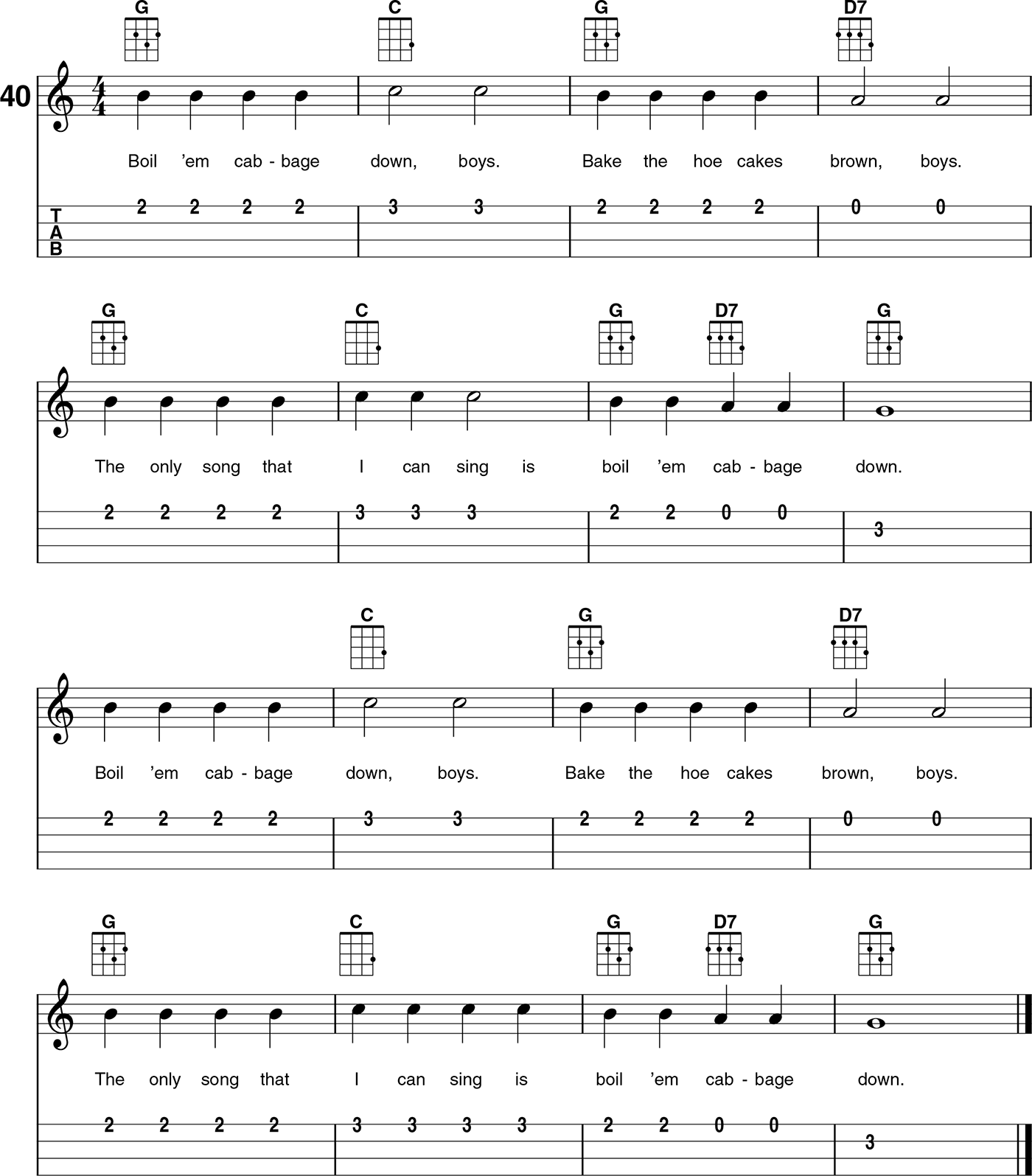
3/4 TIME
While most of the songs we have studied so far have had four beats per measure, 3/4 time has only three beats per measure. One of the most common 3/4 patterns is called waltz time. A waltz is an old-fashioned dance that originated in Eastern Europe around the beginning of the eighteenth century. Today, this rhythm is an important part of American music.

There are literally thousands of songs in 3/4 or waltz time, including “Goodnight Irene,” “Tennessee Waltz,” “Melody of Love,” “After the Ball,” “Scarborough Fair,” “Streets of Laredo,” and “Norwegian Wood.”
Here’s a 3/4 picking exercise using the G and B notes. Count as you pick.
Waltz
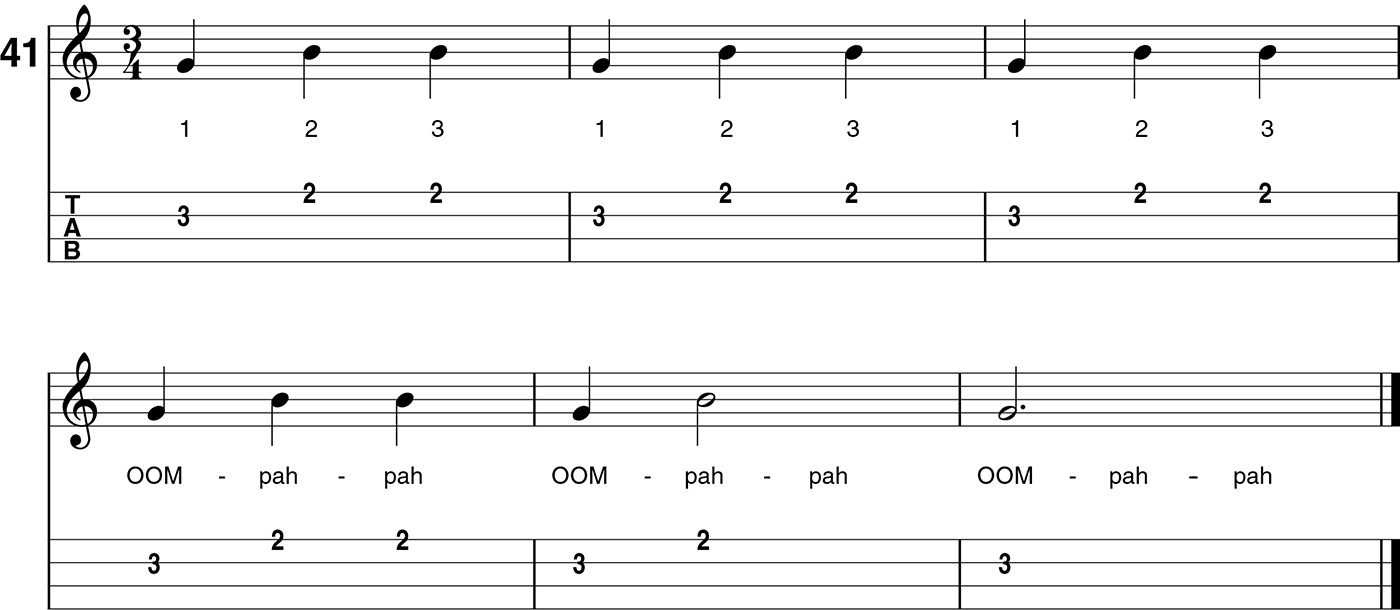
Hawaii’s late Queen Liliuakalami once said that the word ukulele meant “the gift that came home.” Uku means “gift,” and lele translates as “to come.”
—Old Time Herald
Try this exercise in 3/4 time using the thumb brush strum.

PLAYING THE 3/4 STRUM
Here’s one of the many ways to strum in 3/4 time:
1. Position your pointer finger over the fretboard as if you’re about to strum;
2. finger a G chord;
3. strum down on beat 1, putting emphasis on that beat;
4. strum down again on beat 2;
5. follow that quickly with an up-strum on the “and” of beat 2;
6. finish with one final strum on beat 3.
The whole thing looks like this:

Now let’s give it a try.
WALTZ STRUM
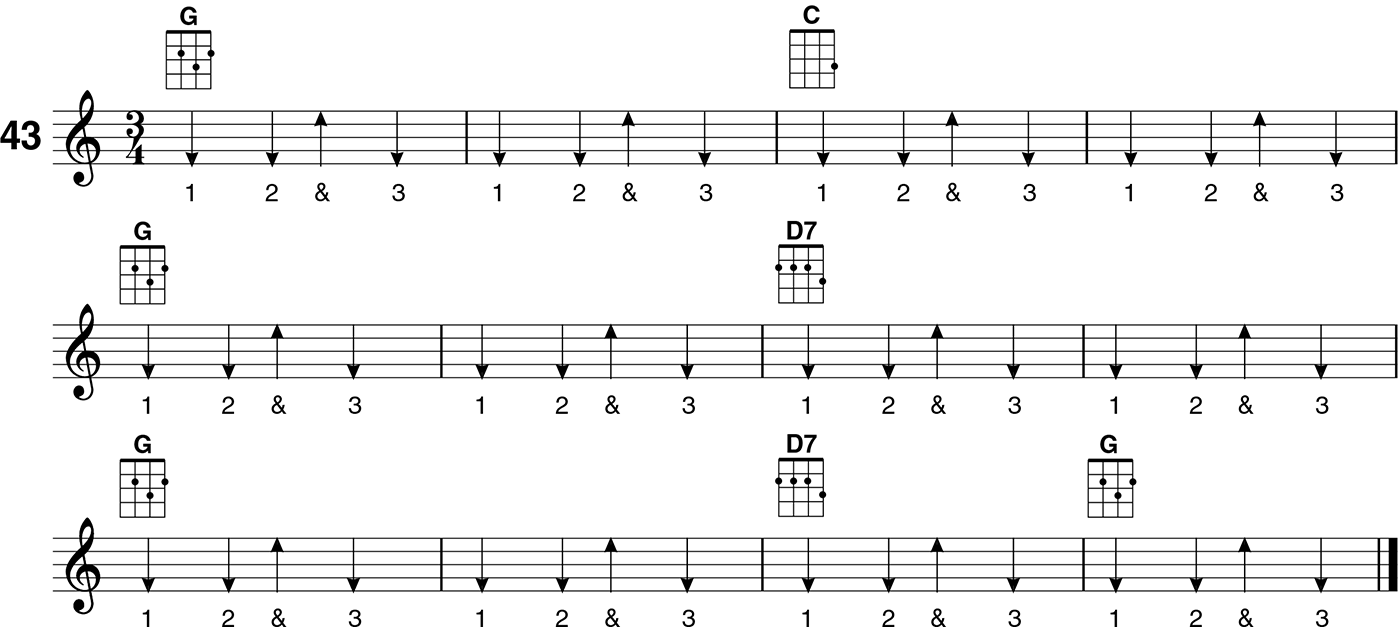
Play this well-known melody, then play the chord part using the 3/4 strum.
AMAZING GRACE
By John Newton
Arrangment by Lil’ Rev and John Nicolson
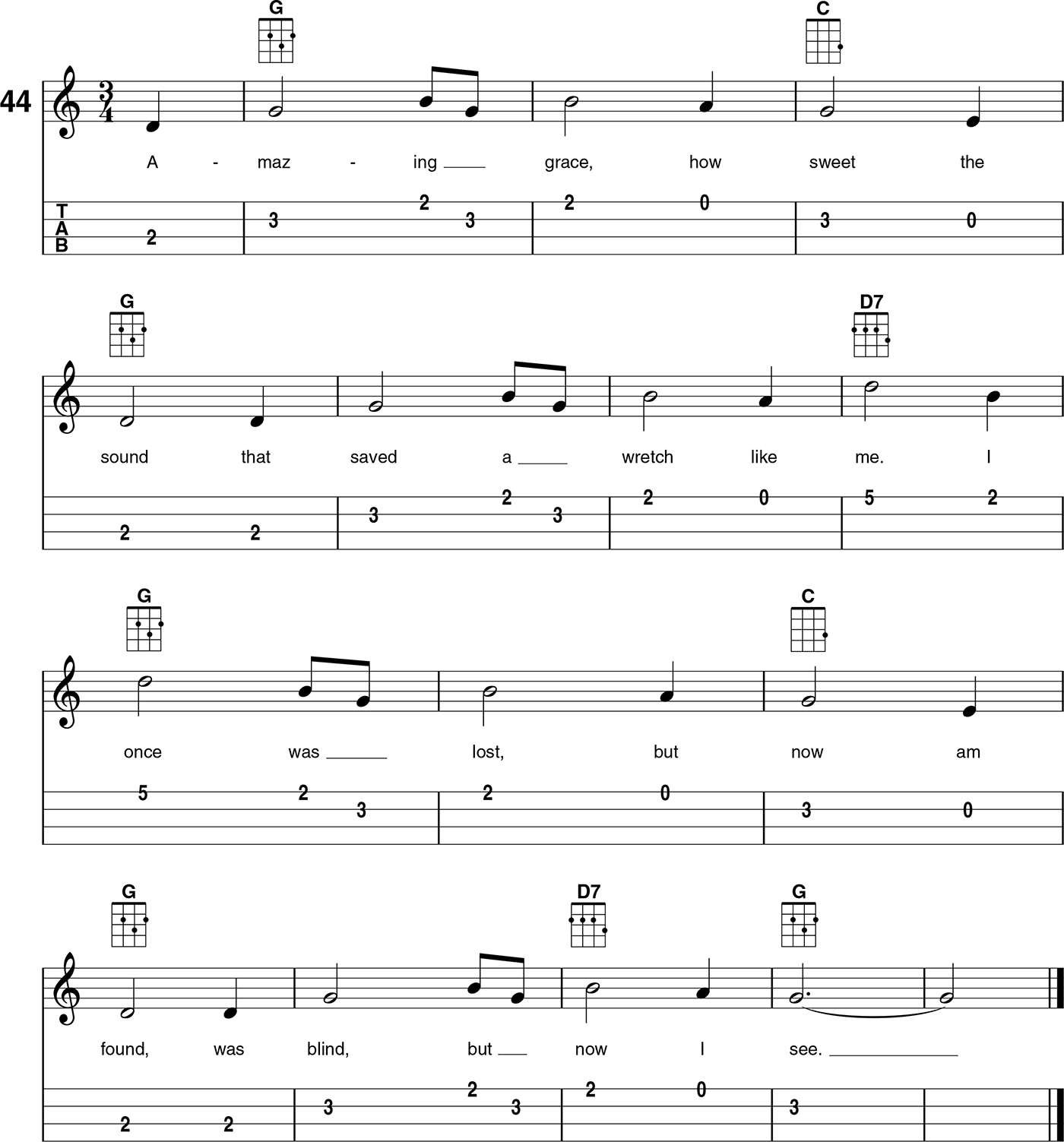
John Newton was the captain of a slave ship. While sailing on the high seas, he experienced a religious conversion and returned to Africa to set his captives free. He went on to pen many classic hymns, but this one took on a life of its own.